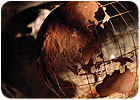
There is an old Chinese proverb, “there is no wave without wind,” which today can be interpreted as: There is no Chinese economic boom without a complex, expanding global marketplace. With increasing demand coming from India, Russia, the European Union, the United States and China itself, Chinese manufacturers are struggling to keep up.
It is no secret that China has become an increasingly important player in the global economy, with rapid growth policies that have gross domestic product increases soaring in the 10% range in recent years.
The Present State
Such rapid growth brings to light unique challenges for manufacturers, as Chinese industries have been shaken by a series of media reports describing substandard products ranging from prescription drugs to toys. The spate of recalls from Chinese manufacturers over the past few years highlights the need for technology to facilitate quality improvements, increased supply chain visibility, as well as the logistical and distribution challenges associated with doing business in China.The Chinese government is making substantial investments in essential business infrastructure needs such as roads, warehousing, ports and stable Internet networks. Companies doing business in China must remain flexible to the rapidly changing conditions on the ground. The rules of engagement for businesses differ depending on localities, and to be successful, businesses must learn to comply with local regulations and, in essence, play by China’s rules.

China’s progress in creating a lush manufacturing center has been stunning to this point, but it remains to be seen whether it can close the logistical and innovation gaps that will push it over the top as a major world superpower. Source: InfinityQS International
Getting IT Up to Speed
In China, less than 10% of manufacturers are operating with enterprise resource planning (ERP) systems, according to AMR Research. Companies doing business in China are forced to think outside of the traditional ERP box, as Chinese manufacturers are more likely to invest in tangible assets such as servers and PCs rather than major ERP investments. This is partly due to the lack of training or qualified support personnel and also is influenced by finance and IT departments, which are the primary decision makers for technology investments and business applications.The lack of ERP systems, an inconsistent highway network and a fragmented distribution infrastructure all contribute to the lack of supply chain visibility that has inevitably led to quality control issues in China. Throughout 2007, recalls on goods produced in China were front-page news affecting high-impact consumer products such as pet food, toothpaste, lipstick and certain types of seafood.
Market pressures have forced IT providers to dissolve the physical fragmentation of channels. However, with no comprehensive solution, progress is piecemeal and companies are struggling to find ways to bring their logistics operations together in China.
These conditions make the market ripe for Web-based Software as a Service (SaaS) products, which require minimal IT investments and resources. These solutions satisfy the demand for more sophisticated business applications along with the Chinese desire to maintain a degree of autonomy over business architecture.

With rapid growth policies that have gross domestic product increases soaring in the 10% range in recent years, China has become an increasingly important player in the global economy. Source: InfinityQS International
Evolving the Workforce
Supply chain issues arise partly because of a shortage of supply chain professionals in China. According to AMR Research, China will need an estimated 400,000 supply chain and logistics experts by the year 2010. Contrast that to the 10,000 logistics graduates that Chinese universities produce per year. There is a serious labor shortage in this area.This and other logistical issues pose a greater challenge to companies dealing in China than larger political and macroeconomic issues such as currency re-evaluation or government regulations. According to AMR Research, the Chinese government is making substantial financial investments in infrastructure, including plans to build one new airport every five weeks for the next 10 years. In 2006 alone, the government invested $24 billion in the highway system and $42 billion in the rail network, with plans to extend China’s total motorway from 21,000 miles to 54,000 miles by 2020, according to AMR Research.
All of these factors leave supply chain and quality improvement in China as a work in progress. China’s progress in creating a lush manufacturing center has been stunning to this point, but it remains to be seen whether it can close the logistical and innovation gaps that will push it over the top as a major world superpower. For the time being, manufacturers in China must adjust to local conditions and learn to play by China’s rules.

